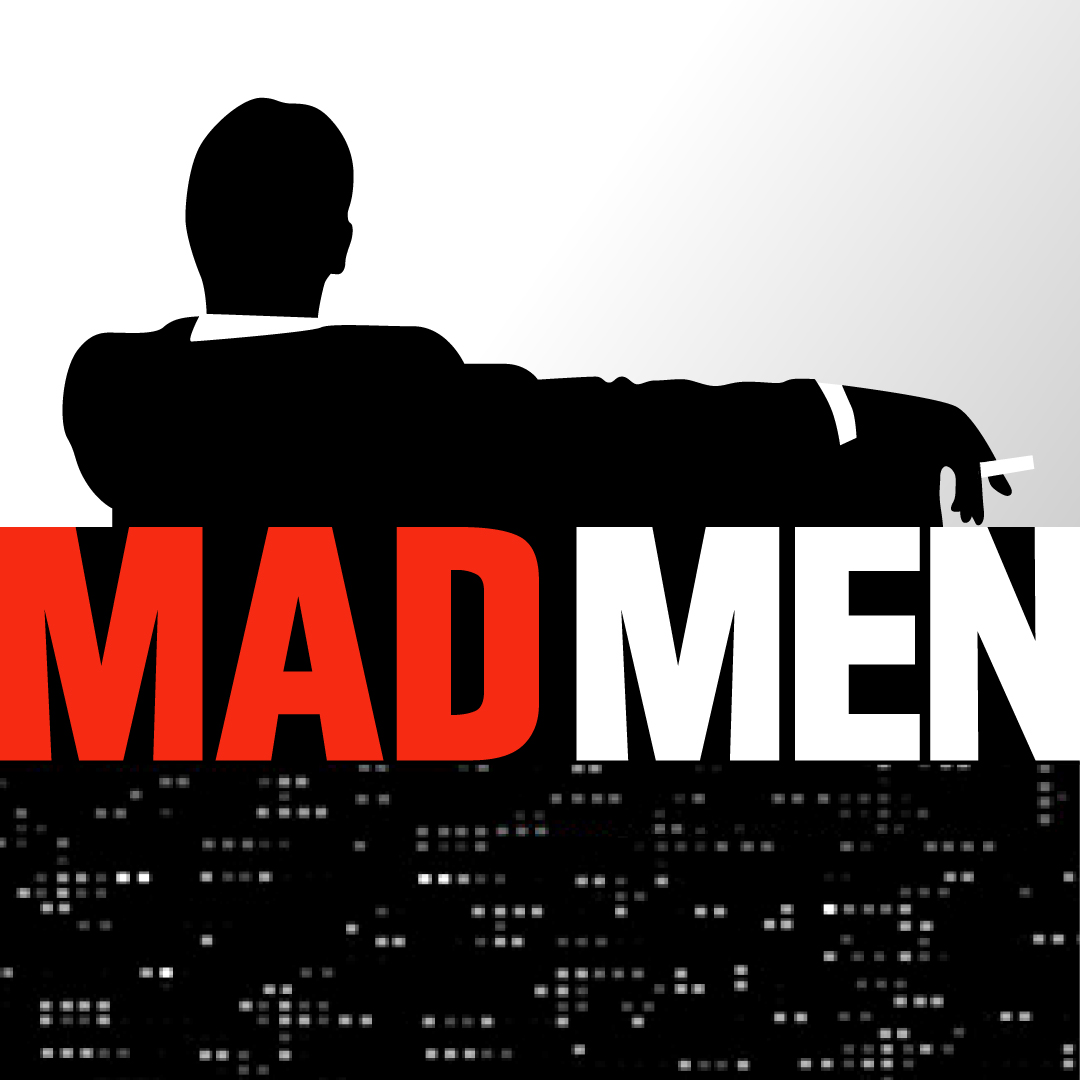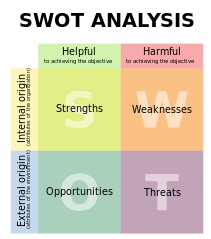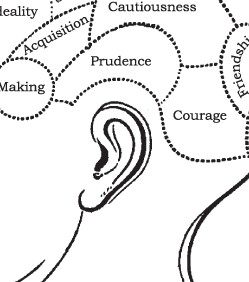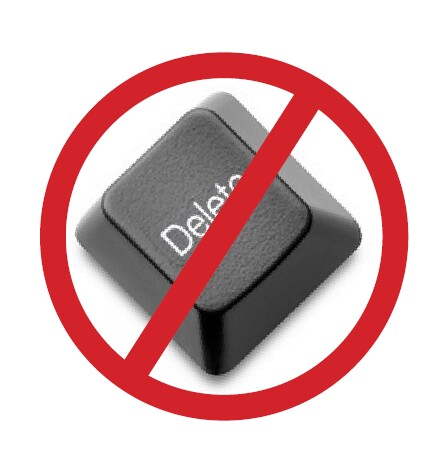 While driving in my car the other day, I was thinking about the recent Mazda TV commercials featuring people that invented something that we commonly use in today’s world. Suddenly, I blurted out something that had me stumped by my own question: “Where do all the crazy breakthrough ideas come from?” And when I say “crazy”, I mean crazy as in unexpected… revolutionary…the WOW kind. Well, after doing some quick online research, it turns out that “formless thought (the stuff that just pops into your head) in a creative mind” is where “crazy” ideas originate from.
While driving in my car the other day, I was thinking about the recent Mazda TV commercials featuring people that invented something that we commonly use in today’s world. Suddenly, I blurted out something that had me stumped by my own question: “Where do all the crazy breakthrough ideas come from?” And when I say “crazy”, I mean crazy as in unexpected… revolutionary…the WOW kind. Well, after doing some quick online research, it turns out that “formless thought (the stuff that just pops into your head) in a creative mind” is where “crazy” ideas originate from.
Many of the products that we can’t seem to live without today started out as crazy ideas – ask the Wright Brothers or Henry Ford or Bill Gates or Steve Jobs or the “Mazda Guys” like Bill Simpson – inventor of flame-resistant racing suits or Martin Cooper – inventor of the mobile phone. Or Netflix, Costco and so on. At the time, it was stuff that nobody needed or was asking for (maybe because people didn’t see a problem that needed fixing), but once developed, it was just the thing that people were waiting for. And each idea proved to be a big success in the marketplace. These crazy ideas have changed the way we go about living our lives and it all started as a formless thought. Knowing this, why is it that many marketers still don’t trust the crazy idea when it shows up unexpectedly especially, since crazy ideas, not safe ideas, are the game changers that propel companies forward. On the other hand, safe ideas are the ones you can more easily assume will work before it takes form in the world. (Note: That said, I’ve never quite understood the concept of guaranteeing a new idea will take hold in the marketplace before it actually gets produced, introduced and marketed. With so many factors involved in making that happen, who can do that?)
In some ways, I think crazy ideas are like the ancient fire that early humans feared until proven helpful. Once these humans first learned that fire made life a lot easier – from staying warm to cooking meat – the idea spread like wildfire (pun intended) and was widely accepted as necessary for a more comfortable survival and not something to avoid at all costs. I believe crazy ideas are like that as well.
In today’s competitive, me-too world, if your product isn’t a legitimate leader in a category, it’s certainly a far better choice to come up with new value story around your own product or service rather than trying to compete price-wise on the value that was generated by a competitor, right? So, if you do find your company ranked 3, 4 or lower in your industry, you might want to be thinking about a crazy idea that will create a new meaning around your brand. Think of it like a “Blue Ocean” strategy.
Two examples come to mind…LA Gear (athletic shoe brand-late 80’s) and Swatch (watches).
In both of these cases, as their larger competitors were keeping an eye on consumer needs related to performance features, both LA Gear and Swatch had the crazy idea that people, and lots of them, were more interested in how they expressed their own personality and style, and these people were willing to pay more for products that helped them do it. In the minds of the customer, these products functionally did what competitive products did…but these products also spoke to them on another level. And in doing so, these two “crazy” companies each created a new category and a competitive advantage that they had all to themselves.
OK, so now what? Well, from where I sit, if your brand/product/service is to prosper in a world that’s driven by the daily creation of crazy new ideas, your company will need to choose whether their marketing department, and their activities, will operate from a creative platform or competitive platform.
When your company operates from a competitive platform, it can only win by having somebody else lose, similar in look to that of a “Red Ocean” strategy. Here companies try to outperform their rivals to grab a greater share of product or service demand. As a result, crazy ideas that are formless and unproven will be quickly be dismissed in favor of the known and the “proven.” Typically the marketing messaging and activities for companies operating from a competitive platform are uninspiring, forgettable, and 2nd tier level within their specific industries. They’re totally devoid of connecting with the customer on an emotional, human-to-human level in part because BIG data has played a huge role in the product coming to market. These messages don’t even register a blip on your consciousness radar screen…they’re that uninspiring.
Alternatively, if your organization operates on the creative plane, it will have a compelling reason for being. It will develop products that redefine the category, fascinating customers with the unexpected, making competition and pricing (in most cases) irrelevant. It’s the type of organization where people don’t settle for the status quo and find “crazy ways” to fill in the blank part of the question, “I wonder what would happen if we ________.” In the movie rental business, “What would happen if we didn’t charge late fees?” Thus, Netflix. In retail, “What would happen if we sold quality products in larger/bulk quantities at the lowest possible prices?” Viola: Costco. This creative plane is where so-called crazy marketing ideas are constantly brought to the forefront for consideration. Where non-traditional thinking isn’t immediately shot down because it doesn’t conform to the “we just don’t do it that way” type of thinking. It’s where your competitors say “why didn’t we think of doing or saying it that way?”
Let me ask you a question: What will your company innovate or creatively say in 2014 that will differentiate your business by bringing higher value to your customer base? My vote would be to get crazy, to break away from commonplace. Embrace that mindset so much so that the next time an idea is presented by your marketing department and someone outside of that department says “That’s a crazy idea,” you’ll say, “Thanks, we love it as well.”
####
Rolf Gutknecht is vice president, director of account services for LA ads. To discuss your thoughts with Rolf on this blog or any marketing matters, email via this link, or visit www.LAadsMarketing.com. You can also connect with Rolf on LinkedIn.
 I was having lunch with a friend who is well-respected and recognized in the advertising industry (age of “Mad Men”), when we both started reciting well-known marketing/advertising quotes and how there are as relevant today as they were 40 to 60 years ago. Unfortunately, too many marketing director types immediately dismiss these pearls of marketing wisdom because they think “that was then and this is now.” The problem with that type of thinking is that these people are doomed to make the same mistakes over and over again because they don’t get one important fact: marketing has the same challenges as it did years ago which, in short, is the need to differentiate your message from competitors so people buy your product or do business with you. It’s we just have a lot more channels to contend with today.
I was having lunch with a friend who is well-respected and recognized in the advertising industry (age of “Mad Men”), when we both started reciting well-known marketing/advertising quotes and how there are as relevant today as they were 40 to 60 years ago. Unfortunately, too many marketing director types immediately dismiss these pearls of marketing wisdom because they think “that was then and this is now.” The problem with that type of thinking is that these people are doomed to make the same mistakes over and over again because they don’t get one important fact: marketing has the same challenges as it did years ago which, in short, is the need to differentiate your message from competitors so people buy your product or do business with you. It’s we just have a lot more channels to contend with today.
So, here are five famous marketing/advertising quotes, with a few thoughts on how they relate to your efforts, whether you’re a social media manager, content marketer, or advertiser:
1. “The truth isn’t the truth until people believe you, and they can’t believe you if they don’t know what you’re saying, and they can’t know what you’re saying if they don’t listen to you, and they won’t listen to you if you’re not interesting, and you won’t be interesting until you do and say things imaginatively, originally, freshly.” – Bill Bernbach
My all-time favorite advertising/marketing quote because it really goes to the heart of getting your product or company’s message recognized and acted upon. If you believe what Mr. Bernbach says, and frankly, how can you not, then the whole idea of developing uninspiring, status-quo, “beige” marketing messaging should never be settled for again…ever. Why put forth the effort of creating something that becomes largely invisible to your audience? This quote goes hand in hand with another Bernbach quote: “You can say the right thing about a product and nobody will listen. You’ve got to say it in such a way that people will feel it in their gut. Because if they don’t feel it, nothing will happen.”
2. “When you reach for the stars you might not quite get one, but you won’t come up with a handful of mud either.” – Leo Burnett
I’ve worked both on the agency side as well as the client side and to this date, I’m still shocked at how often the client thinks so little about the growth opportunities for their product or service, while the agency thinks that the product or service is just the “cat’s meow.” Don’t be an “Eeyore-type.” Think big! While there’s also something to be said for having realistic expectations about what you can achieve, there’s nothing wrong with having big dreams and aiming to make them a reality. If you aim a little higher you might just find yourself achieving things that you might not have thought possible.
3. “Why keep a dog and bark yourself?” – David Ogilvy
If you’ve decided that working with a marketing firm is going to help you communicate your value proposition in ways and forms that you otherwise might not have come up with, then believe in the abilities of those you’ve entrusted to do this and step away from playing copywriter or art director. Yes, you’ll know your product much better than the agency in the same way the agency knows how to communicate it to the marketplace much better than you. In short, collaborating is a good thing. Dictating to your marketing partner, well, that’s not how to get the best work done.
4. “I’d rather apologize than to be so timid as to never try and do anything smart or brave.” – Lee Clow
Lee, who created legendary advertising ranging from Apple Computer’s “Think Different” to the Energizer Bunny to Taco Bell’s Chihuahua to California Cooler, knows of which he speaks. The reason these brands became megabrands is because they recognized good work and weren’t afraid, yes, unafraid, to put it out there for the world to embrace. They rejected the status quo. While your company might not ever become a megabrand, it certainly has in it the ability to fascinate your audience more than it does now and in doing so make your competitors say “Why didn’t we think of that!”
5. “On the average, five times as many people read the headline as read the body copy. When you have written your headline, you have spent eighty cents out of your dollar.” – David Ogilvy
The headline or title of your ad, blog post, collateral piece, Twitter post, YouTube video, etc., is the most effective way to get people to give you the 8 seconds of attention that you want before the reader decides to move on to something else. In short, the purpose of your headline is to get people to read your first line. The purpose of your opening line is to get people to read the next one. If you don’t embrace – and more importantly, implement – this principle, you’re going to miss out on a lot of readers. Employ headlines that stop the prospective customer. Don’t let it be anything but scintillating.
“The consumer isn’t a moron; she is your wife.” – David Ogilvy
“Rules are what the artist breaks; the memorable never emerged from a formula.” – Bill Bernbach
“Creativity may well be the last legal unfair competitive advantage we can take to run over the competition.” – Dave Trott
“Stopping advertising to save money is like stopping your watch to save time.” – Henry Ford
“Don’t tell me how good you make it; tell me how good it makes me when I use it.” – Leo Burnett
So take these inspirational quotes to heart and make your advertising and marketing ancestors proud! If you want your brand and products to get more noticed in today’s media-saturated world, you might not have to look any further than the original Mad Men and marketing legends. Their legends for a reason!
####
Rolf Gutknecht is vice president, director of account services for LA ads. To discuss your thoughts with Rolf on this blog or any marketing matters, email via this link, or visit www.LAadsMarketing.com. You can also connect with Rolf on LinkedIn.
“Life can only be understood backwards; but it must be lived forwards.” – Soren Kierkegaard
 The last quarter of 2013 is almost history and as we stand poised to welcome 2014 in just 50 days from today, we hope for a future that is successful, rewarding and where dreams will be realized. Having seen the start of more than a few “new business years” during my career, I’ve learned that you can do one of two things in preparation for the coming year. You can yet again try to create a brand new marketing strategy for the coming year or you can pause, look back and do some serious reflecting, resolving to change, or improve some aspect about how you will initiate your future marketing campaigns. For some people, looking back over the past year may be something better left in the rearview mirror; on the other hand, burying your head in the sand can be seen as the primary ingredient in a recipe for another disappointing year…and you know how much the CEO/President/Owner/ Founder loves that kind of thinking and pending poor results. So before one celebrates the dawn of a new year…take time to ask yourself what are you going to do to change? What does success in 2014 look like to you and your executive management team?
The last quarter of 2013 is almost history and as we stand poised to welcome 2014 in just 50 days from today, we hope for a future that is successful, rewarding and where dreams will be realized. Having seen the start of more than a few “new business years” during my career, I’ve learned that you can do one of two things in preparation for the coming year. You can yet again try to create a brand new marketing strategy for the coming year or you can pause, look back and do some serious reflecting, resolving to change, or improve some aspect about how you will initiate your future marketing campaigns. For some people, looking back over the past year may be something better left in the rearview mirror; on the other hand, burying your head in the sand can be seen as the primary ingredient in a recipe for another disappointing year…and you know how much the CEO/President/Owner/ Founder loves that kind of thinking and pending poor results. So before one celebrates the dawn of a new year…take time to ask yourself what are you going to do to change? What does success in 2014 look like to you and your executive management team?
Speaking for myself and our firm, the end of each year is met with a healthy dose of optimism for the coming year. We see 2014 through a lens of hopefulness, that things will indeed get better. Is that just us or will you and your organization also view the coming year with a level of anticipation that you haven’t had for a few years? Hey, it’s been tough for most everyone out there but let’s remember that at least a few organizations — perhaps your own competitors — have fared better than most despite these trying times. So what have they done to plot a course for a more optimistic and profitable path for success in 2014?
Depending on marketplace factors coupled with how well you were able to strategically position and market your company, the past year was either seen as a success or another year of disappointment. Success if you were able to grow your share of the proverbial pie (maybe at the expense of your competitors) or be sufficiently positioned to stay in business to fight the fight for another year. Or disappointment if things didn’t turn out so well because of…(you can fill in the blank). The question that begs to be asked here is, how much of last year’s success or disappointment was because of something you had no control over, such as good luck or bad luck, and how much was because of something you did or didn’t do given how the marketplace presented itself? I’ve found through personal experience this is the time to be totally honest with yourself. As the quote goes: “Being entirely honest with oneself is a good exercise.” – Sigmund Freud
Hey, I’m all for a bit of luck but you probably don’t want to continue betting future success on lucky things happening in the coming year. With this in mind, here are a few questions to ask yourself as thought starters as you begin the process of looking in the rearview mirror to last year and through your windshield to the next:
As marketers, one thing we know for sure is that change will not stop in 2014. The economy will continue to shift on us —hopefully with less drama. But by reflecting back on 2013, taking control of your marketing activities rather than being tossed around by the waves in the marketplace, along with thinking optimistically about what 2014 can hold, 2014 might actually be a year worth celebrating. It will be for us and hopefully will be for you as well.
####
Rolf Gutknecht is vice president, director of account services for LA ads. To discuss your thoughts with Rolf on this blog or any marketing matters, email via this link, or visit www.LAadsMarketing.com. You can also connect with Rolf on LinkedIn.
 As an agency who is always looking to team up with marketing-centric, growth-oriented companies, I’m constantly baffled by the number of prospective clients who tell me that their competitive edge is that “we’re honest,” or “we care about our customers,” or “hey, we’re very good at what we do.” The next obvious question then is how many of their competitors say they are not very honest, they don’t really care about their customers, and they’re not very good at what they do?
As an agency who is always looking to team up with marketing-centric, growth-oriented companies, I’m constantly baffled by the number of prospective clients who tell me that their competitive edge is that “we’re honest,” or “we care about our customers,” or “hey, we’re very good at what we do.” The next obvious question then is how many of their competitors say they are not very honest, they don’t really care about their customers, and they’re not very good at what they do?
We’ve all gotten so wrapped up in what we perceive to be our strengths, what we “know” the market wants, what the reasons are that customers purchase our products and services (or at least should do) that we are in danger of not seeing the forest through the trees. We spend our time thinking up strategies, putting time against newer ways of reaching customers and prospects with the ever-increasing tactics of social media, etc. But we seldom, if ever, take the time to stand back and reflect where the company stands in the real-world, as the marketplace sees us.
As marketers, we know the importance of doing a SWOT analysis – Strengths, Weaknesses, Opportunities, and Threats – usually before companies rebrand themselves or new products are launched. SWOT needs to be a central part of our marketing efforts before the strategy development, before the tactical implementation, before undertaking new methods of communicating and measuring the effectiveness of our communications. In fact, when was the last time your organization or your marketing partner put together a brutally honest, no-holds-barred SWOT analysis? If you’re like most, it’s been a while.
In larger companies, marketing departments have annual planning cycles. In smaller companies, the routines are not as formalized, and planning has a tendency to be less frequent and with less time devoted to it. Generally this process looks more at budget allocation, new initiatives to be considered or implemented, staff/services cut-backs, etc. But hardly ever (ok, with less frequency than one would think) does this planning examine not just the strategy and tactics employed but how marketplace changes may have changed the company’s strengths, opportunities, weaknesses, and threats at the most basic level.
This needs to be done on a regular basis before time and resources (financial, staff, etc.) are committed to a strategy, an approach, or new tactics. Important questions need to be asked, and too often the most basic questions are not asked.
We all know them: What are our strengths? Are the strengths recognized by customers and prospects? Do our competitors have the same strengths? What are their strengths? And so on. How has the marketplace changed? Where are the new opportunities? Are our products/services adversely affected by emerging trends? How are our competitors reacting to the changing marketplace? Etc.
So I am NOT suggesting that the Marketing Department doesn’t know how to approach the marketplace or that we don’t know what we need to know. I am, rather, suggesting two things:
1. We need to set aside some time, on a regular basis, to carefully put all these questions and the answers together, and only then plan, create the strategy and implementation tactics.
2. We need to test our assumptions – every time – against what is happening in the real-world, on the ground, where the customers live and where our revenues come from.
With everything on Marketing’s plate today, and the urgency in which it needs to get done, there’s a real danger of losing sight of the basics. Who has the time, right? Well, if we lose sight of the need to regularly and carefully look at what we think our company is (warts and all), look at all that we do, and all the resources we use/spend, in the ever evolving marketplace – not just our guesses about it and our customers – we risk losing all that we work so hard to achieve: increasing revenues and market share.
The time tested marketing adage of “If you don’t really know where you are, it is much more difficult to get where you want to be” has never been more true.
 “Did you hear what I just said?” my wife asked me as I was busy doing the chores this past weekend. Fessing up, I admitted that I heard her but wasn’t really listening. I think it had something to do with the dripping bathroom faucet.
“Did you hear what I just said?” my wife asked me as I was busy doing the chores this past weekend. Fessing up, I admitted that I heard her but wasn’t really listening. I think it had something to do with the dripping bathroom faucet.
There really is a difference between “listening” and “hearing” as my wife occasionally reminds me. Hearing is passive and requires no effort, while listening, on the other hand, requires focus, attention and concentration. So with that as the backdrop, as a marketer, “Are you merely “hearing” your customers or are you “listening” to them?
In today’s world, we’re all stretched for time and the need to get done everything that needs to be done. But too many marketers are becoming so technology-addicted to their iPhones and email that they forget to listen the old-fashioned way to what their customers are saying and learning what it is that they want. They’re hardly even asking them. Attention spans have compressed to seconds, and face-to-face conversations (where body language plays a big part) are avoided in favor of texting and anonymous Internet surveys. It shouldn’t surprise you then that a Harris survey found that about 25% of all Internet users think it’s okay to be “plugged in” during their honeymoon, and just under 10% think it’s alright to surf the web during religious services. Do you really think that any of these people are taking the time to listen to their customers? Hardly.
So how do you know what your customers want? One of the most common answers I hear is, “Because they told us….” Yet, for me anyway, this answer only calls for more questions. Who? When? What did they tell you? How did they tell you – online? in person? Are you sure you really understood what they were telling you? Have their wants changed?
Think about this: if understanding what your customers want is the foundation of your marketing strategy, listening to customers is going to require more than a one-time investment in classic market research tools like focus groups and customer surveys. (Can I get an Amen on that?)
It’s no big secret that the markets in which you compete are evolving. Customer preferences and wants are continually changing. New competitors are showing up. But the one constant is your customers are talking. The key to truly understanding what they want is continual engagement – through social media, one-on-one interactions, and even sales calls. Getting in front of your customers and engaging them in conversations should be a required part of every marketer’s job – from the CMO down to the marketing specialist. And this applies to both B2B and B2C companies.
Ever wonder what causes customers to flock to one brand while remaining coldly indifferent to another—even when the offerings of the companies in question aren’t substantially different? Well, my experience working with varied sized organizations in all sorts of industries says that the single most important factor that separates the good companies from the great companies is the ability to listen to their customers. Great companies are maniacal about listening and differentiate meaning from the information given. In other words, they’re doing more than hearing what their customers are saying. They’re spending quality time listening. And they’re deriving their direction from what their customers are saying.
On that note, with social media being what it is, here are a couple of things to consider to help bring home the point of how important listening really is: Almost 50% of consumers want businesses to listen to them to improve their products while 60% of consumers want businesses to respond to their complaints. And, 66% of consumers across age groups want companies to respond to online comments on social media platforms.
Here are 5 quick tips on listening to your customers, and please, share this with your staff:
Now that all said, it’s also important to understand that not all customer comments are of equal importance and listening to them without some discrimination can be dangerous. Sure, they provide valuable feedback, advice and criticism, but the stuff some customers tell you can be distracting, unfocused, self-serving and a waste of time. You can’t please everyone and you can’t meet the needs of all your customers. This is when “hearing” them is a better course of action.
At the end of the day, if you don’t care, or can’t convince your customers that you listen, you can bet they will find a competitor who does. Successful businesses walk the walk and listen to the talk,
by Rolf Gutknecht, Agent of Change (c) 2012
I’m not sure about you, but in the deluge of emails that comes my way each and every day, it’s real easy start deleting them without even thinking about whether there’s content that might make my life and that of my clients easier and better. So, I stopped doing that about  6 months ago and now take the time to open each one and at the very least scan for interesting info. Maybe I’ll see something about trends, or research data, facts, or a tidbit about helpful hints. Without doing so, I’d miss out on stuff I should know about and, respectfully said, that’s probably the case with you as well.
6 months ago and now take the time to open each one and at the very least scan for interesting info. Maybe I’ll see something about trends, or research data, facts, or a tidbit about helpful hints. Without doing so, I’d miss out on stuff I should know about and, respectfully said, that’s probably the case with you as well.
Well, with your indulgence, I wanted to share with you 10 pieces of information that you may not be aware of which in turn will help you grow your business by seizing on untapped revenue-producing opportunities. So, here goes:
As I said, it’s easy to delete a bunch of good information that comes your way because of time constraints, being short staffed or being overwhelmed with email after email. But this is all good information that I received and looked over before I hit the delete key. If you’ve read this far, you’ve made the same thoughtful decision as well.
At my daughter’s college volleyball game this past weekend, I struck up a conversation with a guy who let it be known that he was the Director of Marketing for a company that owned a few hospitals. Knowing something about hospital marketing, I asked him about his competitor’s marketing activities and he then told me he thought one competitor was doing this and that another was doing something else…he thought. I asked him how sure he was about those things and he said “Honestly, that’s why I said ‘I think that’s what they’re doing’ because I really don’t know for sure.”
 With more work to do with less people, budgets and services, along with not putting in place research that would tell them differently, it’s easy to see why lots of companies don’t really know how their competitors are marketing themselves and their products. One thing we all know for sure is that times have changed and, as a result, it’s more critical than ever to have competitive intelligence for the benefit of the company’s future…as well as not having your boss say “What do you think about the new ad for ABC Widget?” and you haven’t a clue. It’s just not a good place to be…I know.
With more work to do with less people, budgets and services, along with not putting in place research that would tell them differently, it’s easy to see why lots of companies don’t really know how their competitors are marketing themselves and their products. One thing we all know for sure is that times have changed and, as a result, it’s more critical than ever to have competitive intelligence for the benefit of the company’s future…as well as not having your boss say “What do you think about the new ad for ABC Widget?” and you haven’t a clue. It’s just not a good place to be…I know.
So what can a budget-challenged marketing professional do to track the competition without taxing already limited resources?
Let’s start with a few basics: Know who all your competitors are–not just the obvious ones, but the ones flying under the radar as well. Simply put, competitors can be direct (those offering nearly identical goods or services as you do) or indirect (those offering different types of products that answer the same needs). Staples and Office Depot are direct competitors; Sam’s Club is an indirect competitor.
From that point on, it’s about keeping your ears and eyes open. Again, while it seems oh so obvious, when was the last time you looked at a trade magazine or business journal or dug around online to see who’s saying what to your customer or prospective customer? What did the competitor’s ad say; the trade show booth look like; how did their packaging show on the shelves; or what did their last promotion look like? And let’s not forget about all their online initiatives.
On that note, here are some things I do to get intelligence on “the other guys”. An easy place to start is with Google Alerts. Plug in the name of the competitor or associated products and let Google send you daily messages whenever related content appears online.
Then there are the websites. Ask yourself when the last time you visited a competitor’s website and what did you see? For example did you notice things like the kind of content and the different formats used; any social media networks they are part of; what media coverage they received and the different topics they issued in their press releases?. What about looking at their content, which will give you an idea of what they’re trying to rank for. And here’s one for you: how many different websites do your competitors have? It’s quite possible that maybe some of your competitors have more than one website. Time to look for them.
You can also check out the social media profiles of your competitors on Facebook, LinkedIn, Twitter, etc. or use a social media search engine such as SocialMention.com to see the kind of content they post and who they follow and who follows them. It can also reveal what others are saying about your competition, good and bad. And then there are corporate blogs. Studying the blogs by your competitors, if they have any, can help you know what kind of topics and categories they cover because it will help you ensure that your blog follows a different and better messaging strategy.
For those that are saying “yeah, yeah, yeah, what else?”, well, a backlink analysis of your competitors’ sites will give you a basic idea of where they are getting their links from. For this you can use sites like Open Site Explorer. They show up to 1,000 backlinks for free and even more if you use their paid version. Backlink analysis often brings up sites where your competitors might be advertising and those links give you information on some of these popular sites (they did some research – gain from their knowledge).
Did you know about a little known tool from Google called Double Click Ad Planner? It’s for finding out detailed demographic information about your competitors’ customers. As well as giving you reliable figures on how many visitors your competitors’ websites get, you can also find out the age of their customers, income, gender, education level and more. And while we’re on the subject of Google, if Google’s the one ranking your business against your peers, then it makes sense to understand who Google thinks you’re similar to, right? Here’s food for thought: type in your own URL in the searchbar and see what comes up. You may be surprised.
So, am I trying to intimidate you by showing you just how much competition there is out there today? Nope. But it’s important that you’re aware of it so that as you monitor competitors’ actions, you’re looking at the right sites and in the right direction. Because times have changed and your competitors are no longer just the names you’ve always known. Your competition is anyone who gets themselves in front of YOUR customer’s line of sight. Frances Bacon’s quote “Knowledge is King” couldn’t be more right on.